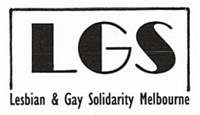




Note: This section may contain the names and images of deceased people. We treat Indigenous culture and beliefs with respect. We acknowledge that to some communities, it is distressing and offensive to show images of people who have died.
If anybody finds items which they find distressing and offensive, we ask them to notify us.

Article in the National Times, weekend of 2 December 1978:
GALARRWUY YUNUPINGU, chairman of the Northern Land Council which represents the Territory's Aborigines, is emerging as one of the fastest learners about politics, white man's style.
Yunupingu has had several meetings with the Prime Minister, the Deputy Prime Minister, Doug Anthony, and the Minister for Aboriginal Affairs, Ian Viner, over the controversial Ranger uranium agreement which has split the NLC down the middle. We don't know if these discussions are relevant to his current view of politics.
According to a transcript of one of the NLCs recent meetings over the Ranger agreement, Yunupingu told his black colleagues gathered at the Red Lillies lagoon in Arnhcm Land: ". . . This council is mucking around with the dirtiest job there is. Politics is not a pure job, and if you want to be dirty you'd better not be a Christian bloke to play around with politics. "You'd better be the dirtiest man on the face of the earth. And that is very true, politics is dirly; it's trickery. You think of anything, anything under the sun. Anything that you can try and win that other person to actually sit down and talk to him.
"Bluff him, anything, tell him jokes, any stories, threaten him with anything to make him win, so that he will sensibly come and sit down with you. . .
"I'm talking like a professional politician. Politicians are in that position, they talk one thing and do the other next day. And I'm just one person who is able to do that. And if Jerry (Blit-ner, Deputy Chairman of the NLC) is criticising me on that he can go ahead and criticise me, but he's not going to . . . put me out."

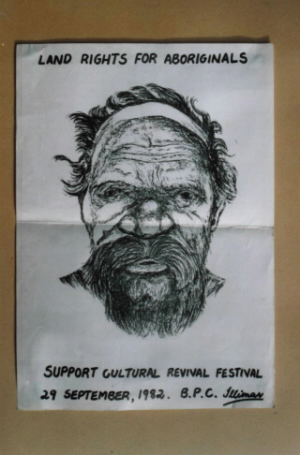
Support Cultural Revival Festival 1982

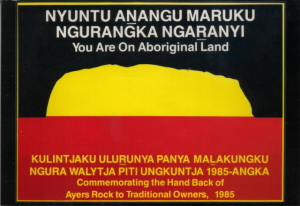
Commemorating the handing back of Ayers Rock to its Traditional Owners 1985


Demonstration through Redfern and Sydney City about Aboriginal Deaths in Custody and Land Rights Issues - Photos by Mannie De Saxe
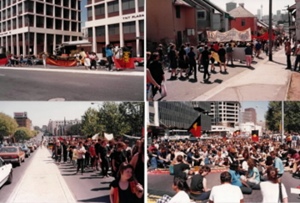
The march through Redfern and into the City ended with a sit-in outside Sydney Town Hall, closing George Street for about an hour.

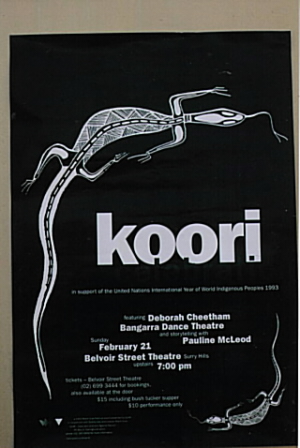
Sydney Gay and Lesbian Mardi Gras event at Belvoir Street Theatre 1993

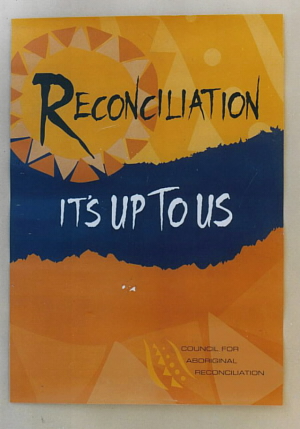
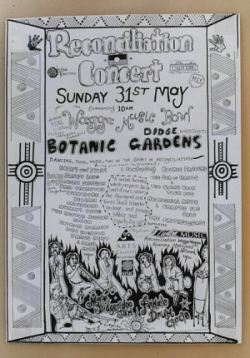
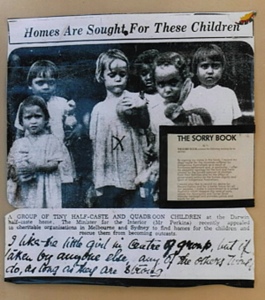
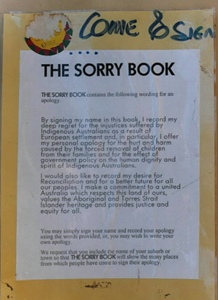
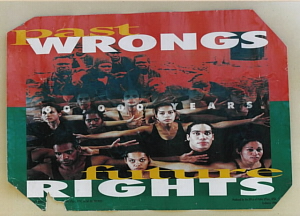
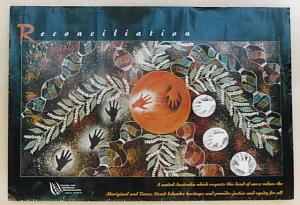
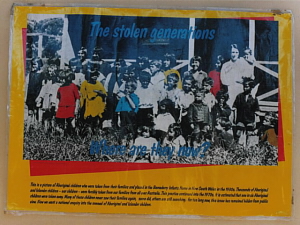
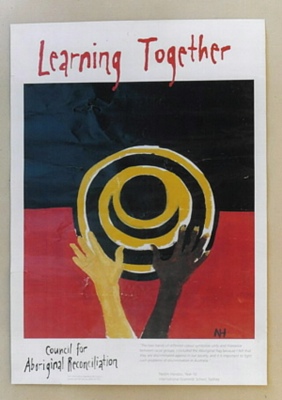

Federal Treasurer Peter Costello, 4 Treasury Place, Melbourne Vic. 3002.
Friday, 11 May 2007.From: Kendall Lovett, 2/12 Murphy Grove, Preston; Postal address: PO Box 1675, Preston South Vic. 3072.
Treasurer,
This week you handed down the Budget for the 12th time and again the funding for Aboriginal health measures announced was way below what is needed for equality with other Australians. After 40 years since the referendum, Australian governments are still dragging the chain on closing the indigenous life expectancy gap.
It really is imperative that you read the photocopy enclosed (SMH 27.4.07) in which Ian Ring from the Centre for Health Service Development, University of Wollongong, calculates that the real funding required is in the range of $350 million to $450 million annually not around $121 million (approx) for health measures over the next 5 years that you have allocated in the Budget.
There is still a generous surplus available after the Budget I am led to believe so what better way to use a good portion of that surplus than in the manner suggested by the Centre for Health Service Development.
Sincerely,
Kendall Lovett.

Federal Health Minister Tony Abbott, PO Box 450, Manly, NSW 2095.
Friday, 11 May 2007.From: Kendall Lovett, 2/12 Murphy Grove, Preston; Postal address: PO Box 1675, Preston South, Vic. 3072.
Health Minister,
This week the Treasurer handed down his budget for the 12th time and again the funding for Aboriginal health measures announced was way below what is needed for equality with other Australians. After 40 years since the referendum, Australia’s governments are still dragging the chain on closing the indigenous life expectancy gap.
It really is imperative that you read the photocopy enclosed (SMH 27.4.07) in which Ian Ring from the Centre for Health Service Development, University of Wollongong, calculates that the real funding required is in the range of $350 million to $450 million annually not around $121 million (approx) for health measures over the next five years that the Treasurer has allocated in the Budget.
There is still a generous surplus available after the Budget I am led to believe so what better way to use a good portion of that surplus than in the manner suggested by the Centre for Health Service Development. Perhaps it’s up to you to bend the Treasurer’s ear and the PM’s ear in that direction.
Sincerely,
Kendall Lovett.

The response (below) to the above letter to the Treasurer on 11 May 2007 was received from the Department of Health and Ageing on 8 August 2007:
Thank you for your letter of 11 May 2007 to Ihe Treasurer, the Hon Peter Costello, concerning funding for Indigenous health. Your letter was referred to the Minister for Health and Ageing, the Hon Tony Abbot MP. The Minister has asked mc to reply on his behalf and I apologise for the delay in replying.
The Government shares your concern for the health status of Aboriginal and Torres Strait Islander peoples and is implementing a number of programs which over time will lead to improvements in overall health status.
An important mechanism for improving Aboriginal and Torres Strait Islander health is the availability of comprehensive primary health care services delivering effective and appropriate services to Indigenous peoples.
The Commonwealth Government has substantially increased the coverage and capacity of Indigenous-specific health services across Australia in urban, rural and remote areas since 1996-97. Funding for the Aboriginal and Torres Strait Islander health program in 2007-08 is in excess of S440 million - a real increase of more than 210 per cent from 1996-97 funding. Indigenous specific initiatives in other parts of the portfolio, including aged care, take total spending on Indigenous programs in 2007-08 to S560 million.
Currently there are over 200 organisations funded by the Commonwealth Government to provide primary health care, substance use services or mental health services to Aboriginal and Torres Strait Islander peoples. The majority (80 per cent) of these organisations arc Indigenous community controlled health organisations.
In the recently announced 2007-08 Budget the Commonwealth Government has committed funding of S37.4 million over four years to establish Health@Homeplus, a nurse-led home visiting program for mothers and babies. The program will provide home visiting services [0 all Indigenous children in target regions from birth until they reach two years of age. Heallh@Home Plus will reach beyond clinical settings into the home, where positive health behaviours and child rearing practices can be reinforced into lifelong habits.
In May 2005 the Commonwealth Government provided S102.4 million over four years for the Healthy for Life program, to improve the health of Aboriginal and Torres Strait Islander mothers, infants and children, and improve the prevention, early detection and management of chronic diseases such as diabetes, renal and cardiovascular disease. The Healthy for Life program aims to improve access to antenatal, postnatal and child health care, improve birth weights, and reduce the incidence of illness and disease for Indigenous babies and children.
A new Medicare-funded annual Aboriginal and Torres Strait Islander Child Health Check for children from birth to 14 years of age was introduced on 1 May 2006. This annual child health check complements the Healthy for Life program, as well as the existing health assessment items funded under Medicare for Aboriginal and Torres Strait Islander adults. Up to April 2007 Medicare statistics show that over 5000 Child Health Check items and over 27,000 Adult Health Check items have been claimed.
In order to increase access of Aboriginal and Torres Strait Islander peoples to mainstream health services, the 2006-07 Budget allocated $12.63 million over four years for five organisations to become community health brokers in New South Wales, Western Australia. Queensland or Victoria. The broker organisations will assist local doctors and allied health professionals to provide health care in a way that meets the clinical and cultural needs of Indigenous Australians.
The program funding specified above is in addition to the funding provided through mainstream health programs, such as Medicare and the Pharmaceutical Benefits Scheme (PBS). Medicare and the PBS arc becoming more responsive to meeting the health needs of Indigenous Australians including the introduction of specific Aboriginal and Torres Strait Islander Medicare health items, and the development of arrangements to list medicines on the PBS to treat conditions particular to Indigenous communities.
While the health status of Indigenous Australians remains worse than non-Indigenous Australians, there have been real and measurable improvements in some areas of the health of Aboriginal and Torres Strait Islander peoples in recent years. The recently released 2006 Aboriginal and Torres Strait Islander Health Performance Framework Report shows there have been real improvements in some areas; such as:
• The all cause Indigenous mortality rate in the Northern Territory. South Australia and Western Australia decreased by 16 per cent between 1991 and 2003; and

Ms Nicola Roxon MP, Federal Shadow Health Minister, 204 Nicholson Street, Footscray Vic. 3011.
Friday, 11 May 2007.From: Kendall Lovett, 2/12 Murphy Grove, Preston; Postal address: PO Box 1675, Preston South, Vic. 3072.
Shadow Health Minister,
This week the Federal treasurer handed down his Budget for the 12th time and again the funding for Aboriginal health measures announced was way below what is needed for equality with other Australians. After 40 years since the referendum, Australian governments are still dragging the chain on closing the indigenous life expectancy gap.
It is really imperative that you read the photocopy enclosed (SMH 27.4.07) in which Ian Ring from the Centre for Health Service Development, University of Wollongong, calculates that the real funding required is in the range of $350 million to $450 million annually not $121 million (approx) for indigenous health measures over the next five years that the Treasurer has allocated in the Budget.
Would you or your colleague, Jennie George, ask the Treasurer in the House why he has allocated such a paltry amount in a time when he is able to live up to the expectations of the referendum of 1967?
There is still a generous surplus available after the Budget I’m led to believe so what better way to use a good portion of that surplus than in the manner suggested by the Centre for Health Service Development at the University of Wollongong.
Sincerely,
Kendall Lovett.

This item from the Sydney Morning Herald is the enclosure with the above three letters.



FIRST WORD - by Ian Ring - Centre for Health Service Development, University of Wollongong
A recent report on indigenous health highlighted the much larger gap in life expectancy between indigenous Australian and indigenous people in countries most like us - New Zealand, the United States and Canada. But a second report, from the Northern Territory, noted that the gap since the mid-1960s had decreased for females, although it has increased for males over that period.
So, there have been some gains in indigenous health issues - just not nearly enough.
Why hasn’t Aboriginal health improved? There are lots of reasons, but for health professionals, what stands out are glaring inadequacies and an almost amateur approach to health service provision.
The net effect is a two-tier system in which Aboriginal people generally receive a lesser level of most types of health service than the rest of the population - despite being about three times as sick.
The amateurism lies in the fact that Australia has become the home of the resource-free policy: we say what needs doing, but don’t fund implementation. And money is important.
The most important areas of shortfall are services for prevention, early diagnosis and treatment, particularly the medical and pharmaceutical benefits schemes. Some credit is due to Tony Abbott for the steps he has taken, but these have not put services for Aboriginal people on an equal footing with the rest of the population.
There is no real mystery about what needs doing: more medical and other staff for services for early diagnosis and treatment, and adequately funded programs for key issues - chronic disease, mental health, mothers and babies, etc.
Prevention programs for basics such as smoking, alcohol and nutrition, and national indigenous training programs for doctors, nurses and other health professionals are important, as are affordable medications and better access to specialists.
Early childhood programs, housing and education are also central. And in all this, Aboriginal leadership and community control of health services are of critical importance in tackling access issues.
What would this cost? Most estimates are in the range of $350 million to $450 million a year. No one suggests this should happen overnight but it could be progressively increased over five years. But let’s have an end to resource-free policies. It is realistic for Aboriginal health to improve in as short a time as five to 10 years, but incrementalism won’t do it.

Nicola Roxon, Federal Shadow Health Minister, responded to the above letter as follows:
Nicola Roxon MPThank you for your letter of 11 May 2007 regarding your support for improving Indigenous health and your views in relation to the recent Indigenous Affairs' budget Labor recognises that the Budget provided some positives for Indigenous health, but more needs to be done.
S120 million over four years falls well short of what the Australian Medical Association and Access Economics estimates what is needed to close the 17-ycar life expectancy gap for Indigenous Australians.
Labor believes that it is unacceptable that in a country as prosperous as Australia, the health of one group of citizens should be so much worse than the rest of the population. Labor further believes that it is unacceptable that Indigenous people in Australia are still suffering from diseases more commonly associated with the third world - such as trachoma, rheumatic fever, and chronic otitis media - in the 21 "century.
Indigenous people also suffer from first world health problems, such as diabetes and heart disease, at disproportionately high rates.
Health problems in Indigenous communities cannot be improved overnight. Labor understands that Indigenous health problems are closely linked to a range of social determinants including poor housing, education, employment opportunities and health workforce shortages.
A Rudd Labor Government's approach to turning around Indigenous health will be based on long-term investment in preventative medicine and comprehensive primary health care - that is, on directing the resources to where we know they will make the greatest difference. We will work to attack the problems at their core.
Setting long term objectives and clear targets for improvement, like those proposed by Aboriginal and Torres Strait Islander Social Justice Commissioner, Tom Calma, will be at the heart of Labor's approach.
Labor believes the key ingredients for success include goal-setting within specific time-frames, adequate investment, political accountability and a sense of national leadership. Labor is prepared to take up that challenge and given the opportunity of being in government, would make every effort to secure bipartisan support at all levels of government to achieve this goal.
Labor is also committed to working hard to replicate success. While the overall state of Indigenous health in this country is cause for enormous concern, there are many examples of success that could be expanded, including in the Indigenous community-controlled health sector.
Thank you for taking the time to write to me to express your concern about this important topic.
Yours sincerely
Below is the text of an article by Jennifer Martiniello which will be
forwarded to major newspapers in Australia. Please pass on to your
networks. Jennifer Martiniello is a writer and academic of Arrernte,
Chinese and Anglo descent. She is a former Deputy Chair of the
Aboriginal and Torres Strait islander Arts Board of the Australia
Council for the Arts, and a current member of the Advisory Board of
the Australian Centre for Indigenous History at the ANU.
Howard's new Tampa children overboard are our Aboriginal children. The Little Children are Sacred report does not advocate physically and psychologically invasive examinations of Aboriginal children, which could only be carried out anally and vaginally. It does not recommend scrapping the permit system to enter Aboriginal lands, nor does it recommend taking over Aboriginal 'towns' by enforced leases. These latter two points in the Howard scheme hide the true reason for the Federal Government's use of the latest report for blatant political opportunism.
It has been an openly stated agenda that Howard wants to move Aboriginal people off their lands, and has made recent attempts to buy off Aboriginal people by offering them millions for agreeing to lease their lands to the Federal Government, e.g. Tiwi Islands and Tangentyere in Alice Springs. There was also the statement by the Federal Government that it could not continue (?!) to provide essential services to remote communities, which raised an uproar of responses in the press. The focus on the sexual abuse of children is guaranteed to evoke the most emotive responses, and therefore command attention, just like the manipulation of the Tampa situation. But while the attention of the media and the public is being emotionally coerced, what is being sneaked in under the covers?
Two issues specifically - mining companies have applied for more exploration permits in the Northern Territory, the Jabiluka uranium mining operations at Kakadu have already hit the media because of the mining company's applications to the Government to significantly expand its operations, including establishing new mines at Coronation Hill, and another critical issue - nuclear waste. The Howard Government has already mooted that nuclear waste should be dumped in the Northern Territory, on Aboriginal lands. Aboriginal traditional owners are absolutely opposed to this. We have a long history of deaths and illness from radiation, from the atomic tests at Woomera in the 1950s to the current high incidences of carcinomas in the community at Kakadu near the Jabiluka site. The main obstacle to the Federal Government's desired expansion of mining operations in the Northern Territory and nuclear waste dumping is, of course, the Aboriginal people who have occupancy of, and rights under the common law to, their traditional lands.
Following the stages of the Howard Government's usual modus operandi (defund, blame, eliminate), defunding of critical programs for remote Aboriginal community projects began in July 2004, with coerced changes to funding contracts, and monies for critically needed youth and health programs in remote areas being the first dollars to go. Take Mutitjulu for example, which was notoriously profiled by the ABC's Nightline program. I say notorious because one of Senator Mal Brough's personal staffers was the so-called ex-youth worker interviewed on that program, and the content of that interview was laden with myths and mistruths. The staffer in question failed to appear when summoned before a Senate inquiry to explain and the Senator's office is yet to issue a statement. When the community lodged a formal protest to Government, it was raided and their computers seized. But the program did show the effects of the Howard Government defunding of essential programs on that community, in particular the youth centre and health centre. The people at Mutitjulu also just happen to be the traditional owners of Uluru, one of this country's most lucrative tourist attractions. The Howard Government would not like us to ask who benefits by the people of Mutitjulu being forced off their community. Under the amendments to Native Title made by the Howard Government, once Aboriginal people have left their traditional lands, forcibly or otherwise, their rights under the common law that every other Australian enjoys over their land are significantly impaired.
Progressive defunding of Aboriginal art centres has also begun, with a range of community art centres not having their funding renewed by DCITA in July 2005 and 2006 in the Northern Territory, from communities in Arnhemland to mid and southern Territory communities. The art production facilitated by those Aboriginal art centres are the only means through which members of those communities can actually earn a living, as opposed to being on welfare. But then, dependent people are easier to control by means of that dependency. The Howard Government's failed Shared Responsibility Agreements (SRAs) have also been the catalyst for further blame shifting and progressive defunding, take Wadeye for example.
Our Aboriginal communities are being squeezed further into dysfunction and disenfranchisement by carefully targeted political engineering, the systemic and ruthless roll-out of a planned agenda. It is no accident that Howard's scheme to address what he calls the urgency of the Little Children are Sacred report's 97 recommendations was trotted out so very quickly, and addresses so very few of those recommendations. It is sheer political opportunism to advance an already in motion agenda, and to score points in an election year. After all, The Little Children are Sacred report is not the first of such reports, nor are its findings and recommendations new. The Federal Government has had the 1989, 1991, 1993, 1997 and 2002 reports gathering dust and deliberate inaction on its shelves. Perhaps Mr Howard has been saving them up for a rainy election year? And of course Mr Howard's scheme targets only Aboriginal communities, despite the fact that the findings specifically state that non- Aboriginal men, that is, white men, are a significant proportion of the offenders, who are black-marketeering in petrol and alcohol to gain access to Aboriginal children. What measures is the Howard Government going to take about non-Aboriginal sex offenders, pornographers, substance traffickers and the like? Nothing according to the measures announced, but then, they're not Aboriginal and they don't live on the Aboriginal communities where their victims live.
So who are the real victims here, the silenced victims of John Howard's scheme? Aboriginal children, of course, who will be subject to physically and psychologically invasive medical examinations, irrespective of their home and family circumstances, and who will deal with the mental and emotional fall-out from that? Aboriginal men, too, who become the silenced scapegoats, painted by default by John Howard as all being drunken, child-raping monsters. Perhaps the fact that almost every picture shown of Aboriginal men in the media these days shows them drunk, with a slab, cask or bottle under their arms leads Mr Howard to expect that one to pass unchallenged, irrespective of the fact that statistics show that only 15% of Aboriginal people drink alcohol, socially or otherwise, compared to around 87% of non-Aboriginal Australians. The greater majority of Aboriginal men are good, decent people. Perhaps the media would like to rethink its portrayals of Aboriginal men? How about some photos of the other alcoholics, you know, the white ones. There's more of them.
And what of our communities? The Howard Government also hasn't mentioned that the majority of Aboriginal communities in the Northern Territory are already dry communities, decided and enforced by those communities. But then that would spoil the picture Mr Howard wants to paint of our Aboriginal communities. Other large communities, such as Daly River, have controlled the situation by only having alcohol available from the community's club and enforce a strict four can limit. Also forgotten in the current politically opportunistic furore is the fact that Aboriginal communities around Tennant Creek and Katherine have been lobbying Governments and town councils for decades to restrict the sale of alcohol on Thursdays, when Aboriginal community people come to town for supplies. So far their pleas have been rejected. Nothing in Mr Howard's plan to facilitate that, either. Or about the control of alcohol when those people, once forced off the communities into the towns, bring their problems with them, child abuse or alcoholism and all the rest. Of course that would make access to Aboriginal children a lot easier for white offenders, they won't have to go so far to find a victim.
One last word on focus of attention. In the famous Redfern Address, the then Prime Minister, Paul Keating asked perhaps the most important question for all Australians to consider. He said 'We failed to ask the most basic of questions. We failed to ask - What if this were done to us?' What if this were done to us - to Mr and Mrs Average Australian, to our schools, youth centres, health centres, access to medical care, communities, homes, children, grandchildren? After all, current national health reports from a wide range of health organisations name sexual abuse of non-Indigenous Australian children as a crisis area in need of urgent attention. And the numbers of victims are higher. National reports into mainstream domestic violence, alcohol and substance abuse also call for urgent action, again the issues are at crisis level, and the numbers of victims and abusers are far higher than in the Little Children are Sacred report. None of the recommendations in all of those hundreds of national health reports recommend compulsory sexual health tests for every Australian child under sixteen. Not one of them recommends that a viable solution is closing down youth and health programs, in fact they all advocate that more are needed. None recommend that the victims' or the offenders' communities and homes should be surrendered to the Federal Government and put under compulsory lease agreements, and none advocate processes which would lead to either the victims or the abusers losing their rights under common law to their property as measure to control or remedy the occurrence of abuse. Would the Howard Government even dare to contemplate such as that? I think not. It would be un-Australian, and the Government it would expect immediate legal repercussions on the grounds of impairment of human rights, extinguishment of rights under common law, discrimination, and a raft of other constitutional issues. Besides, Mr and Mrs Average Australian don't, for the most part, live on top of uranium and mineral deposits or future nuclear waste dumps.
But seriously, the most critical question for all Australians to ask themselves in the lead up to this year's Federal Election is just that - What if it were done to us? With full acknowledgment of what has already been done to workers, trade unions, student unions, public primary, secondary and tertiary education, elderly care, palliative care, medicare, crisis health care, nurses, teachers, multicultural affairs, migrant groups, women, child care, small businesses and artsworkers, among the many, through the exercise of policies of social engineering and fear, your answer at the polling booth may just determine whether it will be done to you, or continue to be done to you.
As reported in the Sydney Morning Herald 25th June, the Howard Government last week used the military to seize control of 60 Aboriginal communities in the Northern Territory, which are now under military occupation. This is not Israel and Palestine. The Northern Territory is not Gaza or the West Bank. This is Australia - but is it the Australia you thought you lived in? Walk in our shoes, Aboriginal Australia's, and ask yourselves, what would it be like to have this done to us? And then, walk with us.
Jennifer Martiniello

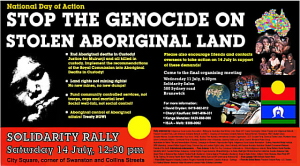

The following letter by Noel Tovey appeared in ACT Gay on 14 January 2009 and is reproduced here in full:
Dear Prime Minister,
I write to you as an elder Indigenous man about a matter of grave concern to me.
Our old people suffered great hardship and trauma in the past and you moved to apologise for this and acknowledge that pain. You demonstrated a deep understanding of the significance of respecting elders, acknowledging mistreatment and minimising harm. We will always treasure your respectful treatment of our elders on that day of apology, and in years to come.
I am an Indigenous artist and writer and am myself 75 years of age. As an older Indigenous man who is also gay, I am deeply concerned at the suffering of gay elderly people, who, like me, have experienced severe trauma in the past due to the ignorance of those around us. I was taken away from my family in 1940. In 1951, while living on the streets in Melbourne I was charged with ‘The Abominable Crime of Buggery’. I was vilified by the Melbourne press and spent time in Pentridge Jail waiting to be sentenced. Several of my friends have committed suicide rather than live a life of fear and shame.
I have grave concerns about the ‘same sex equal treatment’ reforms and the way in which these may compound the suffering of elderly gay people, including Indigenous people. Elderly gay people are from a generation that preceded civil rights and they were subjected to shock treatment, lobotomy and other horrors. They hid from view and remain mostly hidden today. Nevertheless, they are elders of our gay community who deserve protection.
I implore you to protect these elderly people from the harm of being forced to reveal their identities, even in confidence, to officers from Centrelink. For this generation, there was no safe confidential context in which to ‘come out’. The thought of having to do so now is causing them extreme anxiety and consequent physical harm.
Please give your urgent consideration to enacting grandfathering arrangements in relation to age pensioners to protect gay elders from harm. I am mindful that had my own life story not become a fortunate one, I would more than likely be a hidden gay age pensioner myself today. I know you to be a man of compassion and I appeal to your sense of justice, which was so visible to a proud nation on the day of the apology.
I would be very happy to talk with you further about this serious matter.
Yours Sincerely
Thanks for the great coverage of the campaign to free Aboriginal political prisoner, Lex Wotton. I particularly appreciated reading the interview with Warren Smith from the MUA in Sydney, who said, "it's not up to workers to lead the struggle of Aboriginal people. It is up to us to show solidarity with the Aboriginal community in their struggle for justice."
Lex is still in jail as a result of being found guilty in November 2007 for his alleged role in the so-called "riots" that occurred following die death in custody of his friend, Mulrunji Doonudgee, in the Palm Island watch-house.
It is essential that we all continue to show our support for Lex. It is outrageous that he was targeted and is now doing time, while Chris Hurley, the police officer responsible for the death in custody. continues to walk free. While Hurley is trying clear his name by challenging the detailed report of Deputy Coroner Christine Clements, the Doonudgee family aims to prevent this through another appeal.
You can show your solidarity by writing to Lex c/- Townsville Correctional Centre, PO Box 5574 MSO, Townsville, QLD 4810. Lex and his family need to hear from his supporters. You can also circulate the "Free Lex Wotton! Justice for the Palm Island community!" petition initiated by the Indigenous Social Justice Association — Melbourne.
The goal is to obtain 1,000 signatures by August 9. 2009.
This date has been chosen because it is the first anniversary of Lex s Melbourne speaking tour. For a copy of the petition, please email Alison.thorne@ozemail.com.au
Make a donation to assist Lex and his family. "This will assist Lex to pay for phone calls and postage. It will also help fund much-needed regular visits to Lex by family members who make the costly trip from Palm Island. You can make a donation into the Free Lex Wotton account at the Melbourne University Credit Union (HSU 803-143 and account number; 13441).
The family is also eager to source a video camera in good working order to document important events in the lives of Lex's newly born grandchild. Another grandchild is also expected soon, As a political prisoner. Lex is not only incarcerated but is being deprived of many special moments.
Cheryl Kaulfuss, Essendon, VicSteve Biko was murdered by the South African government: he was nearly bashed to death on 6 September 1977. then transported naked in the back of a police van from Port Elizabeth to Pretoria, a distance of 1200km. Six days later, he was dead.
He had been taken by Security Police to a building in Port Elizabeth handcuffed, put into leg-irons, chained to a grille and subjected to 22 hours of interrogation, totturc and beating. He received between two and four blows to the head, fatally damaging his brain. He died on 12 September 1977.
South Africa in 1977 mirrors Australia in 2009 if we look at the treatment of Aboriginal elder Mr Ward.
'The savagery of the South African government continues in Australia. Deaths in custody, far from diminishing since the Royal Commission, continue in an upward spiral. This will not be stopped until there is such a huge national and international outcry that governments in this country will be forced to take notice.
No country controlled by the ruling classes has clean hands when it comes to the treatment of Indigenous people.
The stain of Steve Biko's execution will long live on in my memory. Living in a police state was a very intimidating place to be a political activist. I fled to Australia in 1978 with my family, escaping from the worst excesses that were still to come in the aftermath of the 1976 Soweto riots.
I know that we live in a country where the excesses of our governments continue, and we need to be aware that we need a revolution. But it will still be a while arriving while capitalism goes from crisis to crisis, taking us all along for the ride.
I personally feel horror when I think of the treatment of Mr Ward and when I remember Steve Biko. How can one ever forget?

This item is from Socialist Alternative:

A house being built at a protest camp against the NT Intervention will be publicly opened on Sunday 14 February at Honeymoon Bore, near Ampilatwatja.
Alyawarr people from Ampilatwatja walked off their community in July 2009, to get away from the discriminatory controls of the NT Intervention and the raw sewage that was flowing on their streets.
Trade unions from around the country have come in behind the walk-off. Representatives from the CFMEU, AMWU, AWU, LHMU and Unions NT have sent volunteers to help build the house, with donated materials.
Work started on February 3. While in two-and-a-half years the $680 million Intervention housing budget has produced just two houses (and only after the people at Wadeye signed over their land), unionists and local Alyawarr workers have built one in two weeks.
“Through this Intervention and the new ‘hub towns policy’ the government is leaving us to rot. This opening will send a strong message we are here to stay”, said Alyawarr spokesperson Richard Downs.
“Support is really coming in from around the country now. At the launch we will have Aboriginal leaders like Larissa Behrendt, union leaders like Dave Noonan, national secretary of the CFMEU, Anangu Elders coming up from the APY Lands and people from all around this region.
“We must unite, draw a line and say the racism and discrimination must stop. And we are demanding from all the Aboriginal leaders, all our organisations – which side are you on? Will you stand with your people?” he concluded.
This is not the first time such a call for support and solidarity has been made by Aboriginal activists and answered by the union movement. The Gurindji equal pay strikers extended their struggle to get back control of their land by setting up camp at Daguragu in the late 1960s.
The “union mob”, as they were universally known, helped build houses and toilet blocks, dug gardens, planted trees, and raised money and solidarity from their members in the south.
The Ampilatwatja protest house is a symbol of solidarity with the fight against racism and shows that Aboriginal people, not racist governments or bosses, should control their own lives.
Richard Downs and his uncle discuss the house at the protest camp at the walk-off’s blog: http://interventionwalkoff.wordpress.com/video/
The deceased died on 27 January 2008 as a result of heatstroke which he suffered while in custody, being transported in the rear pod of a Mazda prisoner transport van.
The air-conditioning in the van was not working at the time of the deceased´s death. He was being transported from Laverton to Kalgoorlie a distance of approximately 360kms which took almost 3¾ hours.
Inquest into the death of Ian Ward page 112.
The failure of the air-conditioning was not some sudden, unforeseeable event. The air-conditioning in the vehicle for the pod in which the deceased was placed had been inadequate for use on such trips from the time of its first use and there had been a number of ongoing problems with it. The fact that failure of the air-conditioning in conditions of extreme heat would result in a dangerous situation for prisoners must have been obvious to all concerned.
At some stage in the trip the deceased fell or collapsed against the hard metal surfaces of the prisoner pod in which he was contained and suffered a laceration to his head.
Prior to his death the deceased collapsed onto the floor of the van where he suffered thermal injury on the side surface of his abdomen. The thermal injury was a contact burn, which appeared to be a full thickness burn. The area of the burn was irregular in shape and in the order of 9cm vertically and 6.5cm transversally at its lower aspect and 10cm transversally at its upper aspect. This was a large burn injury. It is clear that the surface temperature of the van was extremely great at the time when the deceased collapsed onto it.
The deceased´s body temperature recorded at the hospital was 41.7oC; an extremely high temperature as the normal temperature is 36-37oC.
Subsequent testing of the Inquest into the death of Ian Ward page 113. vehicle revealed that the temperature within the pod increased relatively slowly and in my view it is clear that for the temperature in the pod to have reached temperatures sufficient to cause the death of the deceased and the burn injury inflicted to his abdomen, the air-conditioning was not working in the rear pod for the entirety of the journey.
The deceased died from heatstroke.
For the reasons outlined earlier I have concluded that the Department, GSL, Mr Powell and Ms Stokoe all contributed to the death.
The deceased was conveyed in the pod of a vehicle which at the time of its constructions was not suitable for transportation of prisoners over lengthy journeys. Over the course of eight years of use the vehicle and all of its parts, including its air-conditioning system, which had been inadequate at the outset, deteriorated with use and wear.
I am precluded by section 25(5) of the Coroners Act 1996 from making a finding which would appear to suggest that any person is guilty of an offence and so I am not able to determine whether the death arose by way of unlawful homicide or misadventure. It is in that context I make an open finding as to how the death arose.
I do not agree with the contention by ALSWA that an open finding should be a finding of last resort; this argument confuses the ultimate verdict with identification of the direct cause of death which has been done in this case.

I sent the following letter to the Freedom Socialist Party (FSP)(Australian) Bulletin, and they published it as shown above under the September 2009 entry on this page. I am reprinting the letter here because I am still outraged by the murder of Mr Ward in Western Australia in 2008 by boiling him in the back of a police van and the murder of Steve Biko in South Africa in 1977 (he had already been virtually bashed to death) in the back of a police van, naked and practically freezing to death.
The only difference between boiling to death in the back of a police van and freezing to death in the back of a police van is that the second one occurred in apartheid South Africa in 1977 and the first one 30 years later in 2008 happened because indigenous people in Australia continue to be treated as non-people at a time when human rights are a major issue in so many countries around the world..
Not only should it never have been allowed to happen in 2008, but the criminality of refusing to lay charges only makes the offence so much worse. Australia's ongoing disgraceful treatment of its minority indigenous communities is a stain on all governments in this country and one wonders when there will be politicians elected to the country's local, state and federal governments who will manage to stop the horrors of abject poverty, child deaths, malnutrition, lack of education, poor health, lack of employment opportunities - the list is endless!
Steve Biko was murdered by the South African government by being first bashed to near death on 6 September 1977, then transported naked in the back of a police van from Port Elizabeth to Pretoria, a distance of 1200km. He died 6 days later.
He had been taken on 6 September 1977 by South African Security Police to the 6th floor of a building in Port Elizabeth (a large southern port city) hand-cuffed, then put into leg -irons, chained to a grille and subjected to 22 hours of interrogation, torture and beating. He received between 2 and 4 blows to the head, fatally damaging his brain. He died on 12 September 1977.
South Africa in 1977, and now still in Australia in 2009, to quote from the report you (FSP) sent:
* The West Australian coroner will ask the Director of Public Prosecutions to consider laying charges over the death of a man who effectively baked to death in the back of a prison van.It would seem that the savagery of the South African government continues in Australia, courtesy of the Rudd and state and territory governments, and that deaths in custody, far from diminishing since the Royal Commission continue in an upward spiral which will not be stopped until there is such a huge national and international outcry that the governments in this country will be forced to take notice.
Unfortunately no country with indigenous people subjected to the control of the ruling classes have their hands clean, and it is difficult to ascertain which countries are worse than each other.
The stain of Steve Biko's execution will long live on in the memory of those of us South Africans who were aware of what the apartheid government was doing but felt powerless to do anything about it. Living in a police state was a very intimidating place to be a political activist, and I fled to Australia in 1978 with my family, escaping from the worst excesses of the police state which were still to come in the aftermath of the 1976 Soweto riots.
To know that we live in a country where the excesses of our governments continue in the face of Royal Commissions and their recommendations is to be aware that we await our revolution but know it will still be a while arriving while capitalism goes from crisis to crisis taking us all along for the ride.
I personally feel horror when I think of the case which is now before the public gaze, and remember Steve Biko. How can one ever forget??
Mannie De SaxePERTH, Australia - A state prosecutor on Monday ruled out criminal charges in the death of an indigenous elder in a prison van with no air conditioning on a scorching summer day in Australia's Outback — a decision that angered Aborigines.
Western Australia Director of Public Prosecutions Joe McGrath said there was no reasonable prospect of a jury convicting the two prison guards who transported the 46-year-old prisoner on the fatal four-hour journey in 2008.
"I'm acutely aware that the death was tragic, avoidable and rightly creates outrage in the wider Australian community," McGrath told reporters.
The prisoner, now known only by his family name Ward because of a cultural prohibition on using the given name of a dead Aborigine, died of heat stroke in the back of the van where the temperature soared to 122 degrees Fahrenheit (50 degrees Celsius).
The two prison officers, who were in a separate front compartment of the van, did not check on Ward and were unaware that the air conditioner in the rear compartment was broken.
Ward suffered a third-degree burn to his stomach after collapsing on the van's metal floor.
A state coroner who investigated the tragedy last year found that the two guards had contributed to the "terrible death" and recommended that prosecutors consider bringing criminal charges.
Aboriginal elder Ben Taylor criticized McGrath's refusal to lay charges and warned that protests would continue until Ward received justice.
"They are killing our people off," Taylor said. "The poor man was cooked alive."
Aboriginal lawyer Dennis Eggington blamed the outcome on a flawed police investigation that deserved further scrutiny.
Aborigines are an impoverished minority of 500,000 in Australia's 22 million population who are imprisoned far more frequently than other Australians.
Ward was being taken from his desert home town of Laverton to the larger Outback centre of Kalgoorlie to face court on a drunk driving charge when he died.
The state government responded to the tragedy with plans to roll out a new fleet of 40 prison vans.
A DECISION not to charge two security guards over the heat-stroke death of a West Australian Aboriginal elder in a prison van has been greeted with anger and disbelief.
Mr Ward, an elder whose full name cannot be used for cultural reasons, died of heat stroke in the back of the van on a four-hour trip from Laverton to Kalgoorlie in Western Australia's Goldfields region in January 2008.
WA Director of Public Prosecutions Joe McGrath visited Mr Ward's widow Nancy at Warburton in the Central Desert at the weekend to tell her charges would not be laid.
He told her there was no reasonable prospect of conviction against the two security guards employed by the security firm GSL, now known as G4S.
Mr Ward's family were said to be distraught over the decision.
A broken air conditioner in the back of the van meant Mr Ward endured temperatures of more than 50 degrees during the non-stop journey.
He was being driven to Kalgoorlie to face a drink-driving charge.
Last year, WA Coroner Alastair Hope found the Department of Corrective Services and security officers Graham Powell and Nina Stokoe and their employer, had all contributed to Mr Ward's death.
Mr Hope referred the case to the DPP because he believed a criminal offence had been committed, he said.
Mr McGrath defended his decision not to prosecute yesterday, saying a thorough investigation had found nobody criminally negligent. He said Sydney lawyer John Agius had endorsed his decision.
The WA Deaths in Custody Watch Committee is seeking an independent review of the case.
WA shadow attorney-general John Quigley said it was inconceivable no one would face charges.
The WA government is finalising an ex-gratia payment to Mr Ward's family.
AAP
The following article is from The Age newspaper:
THE wife of an Aboriginal elder who died of heatstroke in the back of a prison van says she is ''happy and relieved'' that Western Australia's work safety watchdog will lay charges over his death.
WorkSafe WA has laid four charges under the Occupational Safety and Health Act against the state government, the transport company and the two staff involved.
Mr Ward, 46, who cannot be fully named for cultural reasons, died of heatstroke in the prison van in January 2008. He was being transported from Laverton to Kalgoorlie on a drink-driving charge.
WorkSafe charged the Department of Corrective Services with failing to ensure non-employees were not exposed to hazards. Transport contractor G4S was charged with failing to ensure the safety and health of a non-employee for the transportation of people in custody.
Drivers Nina Stokoe and Graham Powell were charged with failing to take reasonable care to avoid affecting the safety or health of the person in custody.
Mr Ward's wife said the charges had been ''a long time coming''.

This open letter was published in arena magazine issue No. 110 in February-March 2011
We are the people of the land. The land is our mother. For more than 40,000 years we have been caring for this land. We are its natural farmers.
Now, after so many years of dispossession, we find once again we are being thrust towards a new dispossession. Our pain and our fear are real. Our people are again being shamed.
Under the Intervention we lost our rights as human beings, as Australians citizens, as the First People of the Land. We feel very deeply the threat to our languages, our culture and our heritage. Through harsh changes we have had removed from us all control over our communities and our lives. Our lands have been compulsorily taken from us. We have been left with nothing.
The legislation under which we now live does not comply with international law. It is discriminatory. We are no longer equal to other Australians. We are no longer equal to you.
As people in our own land, we are shocked by the failure of democratic processes, of the failure to consult with us and of the total disregard for us as human beings. We demand the return of our rights, our freedom to live our traditional lives, support to develop our economic enterprises to develop jobs and to work towards a better future for all our peoples.
So extreme have been the actions against our people that we must appeal to all people of Australia to walk with us in true equality. Speak out and help to put an end to the nightmare that Northern Territory Aboriginal people are experiencing on a daily basis.
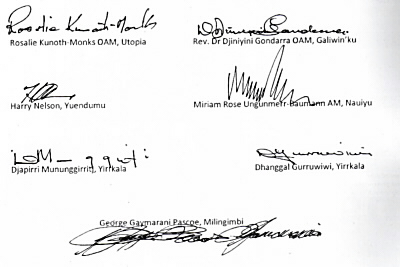

In the "arena" magazine No. 111 under the heading "Correspondence on the Intervention", by Jeff McMullen, two letters were posted, one from Jenny Macklin, Minister for Families, Housing, Community Services and Indigenous Affairs, and a response from Dr Jeff McMullen, CEO (Honorary), Ian Thorpe's Fountain for Youth.
We contacted Dr McMullen to ask whether we could obtain permission from arena and himself to publish the letters on our web pages. Dr McMullen wrote back kindly giving us his permission, and the two letters follow, Minister Macklin's first and Dr McMullen's reply afterwards.
The correspondence makes very interesting reading.
The Hon Jenny Macklin MPThank you for your letter of 15 November 2010 to the Minister for Sustainability. Environment. Water, Population and Communities, the Hon Tony Burke MP, about the film "Our Generation". Your letter was referred to me as this matter falls within my portfolio responsibilities. I apologise for the lengthy delay in responding.
While the "Our Generation" film canvasses a range of issues, it is apparent that the primary area of criticism in the film, and in your letter, is the Northern Territory Emergency Response (NTER).
I acknowledge that the instigation of the NTER by the previous government was a major shock to many Aboriginal people and communities in the Northern Territory and was seen as a serious affront. There was no consultation before it was initiated, and the nature of some of the measures and coercive tone utilised undoubtedly caused anger, fear and distrust.
It also needs to be acknowledged, however, that a widespread emergency did exist and continue.s to exist in many remote communities, with high levels of family violence, child neglect, appalling health status, low rates of school attendance, and high levels of crime including violent crime, and widespread drug and substance abuse. Any one of these factors has the potential to permanently damage or destroy a person's life opportunities. Taken together, they constitute a fundamental and endemic threat to the human rights not just of individuals, but of whole communities.
The Australian Government has attempted, with some real success, to acknowledge and span both these realities. We have retained the NTER because we believe action was and is required. We have attempted to progressively reshape it to make it more respectful and effective. In doing this, we have acted in good faith, with determination, and in a genuine attempt to further the best interests of both Aboriginal people and families in the Northern Territory and the Australian nation as a whole.
Clearly, this is an area of public policy where there is a wide variety of views and where community consensus is not easy to find or to forge.
I do not accept the broad criticisms about the Government's significant efforts to address Indigenous disadvantage in the Northern Territory, nor the criticisms about the Government's record in meeting its international human rights obligations.
First and foremost, I wish to take issue with the way you have characterised the Government's actions in relation to the Racial Discrimination Act J975 (RDA) and the NTER. The Government has fully reinstated people's rights and protections under the RDA in relation to the NTER. Under the legislation that was passed by the Parliament on 21 June 2010, all of the provisions in the NTER legislation that suspended the operation of the RDA are removed. In addition, all of the provisions in the NTER legislation that deemed certain measures to be special measures, such as income management, five-year leases and alcohol and pornography restrictions, have been repealed. This is not a "feigned reinstatement' of the RDA.
Before introducing this legislation, the Government undertook extensive consultations with Aboriginal people across the Northern Territory on future directions for the NTER. The consultation process included over 100 whole-of-community meetings covering all communities and town camps affected by the NTER, 11 workshops with regional leaders and key stakeholder organisations, and over 440 face-to-face discussions between Government Business Managers and individuals and small groups in communities. This was the most comprehensive engagement ever undertaken by government with Indigenous people in Australia.
The Government was influenced significantly by what it heard in the consultations and by the feedback from individuals and communities. A common theme expressed was that children, the elderly and women were now feeling safer, were better fed and clothed, were getting a better night's sleep, and there was less inappropriate pressure on income support recipients for money. People felt that this was due to the combined effects of various NT ER measures, including income management, alcohol restrictions, community stores licensing and an increased police presence in remote communities.
You claim that the NTER is a government takeover of privately-owned land and that people are forced to sign 40-year leases in exchange for housing and other services. This is not correct. Creating tenure arrangements which provide security to land owners, investors and land users. through mechanisms such as voluntary long-term leasing, is a critical step in closing the gap in Indigenous disadvantage.
Long-term leasing, based on agreements with land owners, is essential on communal title if we are to secure major public investments. Importantly, it also ensures that governments take responsibility, and are accountable, for housing construction standards, for long-term repairs and maintenance programs and to underpin tenancy management systems. All these issues underpin longer asset life spans and as a consequence contribute to less overcrowding. Broader reforms to land tenure arrangements are also necessary to allow for the pursuit of home ownership and business opportunities on Indigenous lands. Economic development on Indigenous lands has traditionally been hampered by the communal ownership of land, preventing individuals from raising finances for commercial purposes and home ownership. The Government is working with Indigenous land owners and state and territory governments to make Indigenous lands in remote communities more suitable for economic development and home ownership opportunities.
In relation to the initial acquisition of five-year leases by the previous government, I recognise that the compulsory nature of the acquisition of township lands was counter-productive. The Government has committed that it will seek to replace them with voluntary leases upon their expiry in 2012. The Government has taken action to revise the boundaries and to ensure that rents are paid to landowners.
I agree that we must include Aboriginal people in setting future policy directions that affect them. The Government is committed to a reformed approach to engagement with Indigenous Australians, based on the principles of mutual respect, cooperation and mutual responsibility. In 2011, the Government will implement an Aboriginal and Torres Strait Islander Engagement Framework across its agencies to improve how the Australian Public Service engages with Indigenous Australians on the policies, programs and services that affect their lives. The Framework will drive the adoption of effective engagement as an integral part of day -to-day business.
The Government's commitment to improved engagement has been acknowledged by the United Nations Human Rights Council in its recent Universal Periodic Review process. The establishment of the National Congress of Australia's First Peoples was welcomed by the Council as a strong gesture of the Government's commitment to engagement with Indigenous Australians.
Australia also received encouraging support from many countries for its efforts to improve the human rights of Indigenous Australians, through its endorsement of the United Nations Declaration on the Rights of Indigenous Peoples, for the National Apology and for our commitment to pursue constitutional reform to recognise Indigenous Australians.
In conclusion, I can assure you that the Government is determined to continue its work in combating Indigenous disadvantage. The independent NTER Review Board found that the situation in remote Northern Territory communities and town camps remained sufficiently acute to be described as a "national emergency*. The Government found this evidence compelling. and continues to be focused on ensuring that the NTER delivers improvements to address the unacceptably high level of disadvantage and social dislocation experienced by Aboriginal people living in remote communities and town camps in the Northern Territory.
Thank you again for writing.
Yours sincerely
The Australian Government has finally admitted that the Northern Territory Emergency Response was a “major shock” and a “serious affront” causing “anger, fear and distrust” in Aboriginal communities. The Government and the Opposition Leader, Tony Abbott, also now admit that there was “no prior consultation” with Aboriginal people. Mr Abbott adds that, “One of the problems with the Intervention was its ‘top-down’ nature.”
If you seek “a reformed approach to engagement with Indigenous Australians” as you indicate, I urge you and the Prime Minister, Julia Gillard, to consult soon on their homelands with the overwhelming majority of leaders who oppose the Intervention, including Dr Djiniyini Gondarra OAM of Galiwinku, Elcho Island and Rosalie Kunoth-Monks OAM of Utopia, because you have not addressed their grievances or indicated how the Australian Government sees a constructive way to move forward.
Your letter to me of 2nd March 2011 arrives after a long Government silence on the anguished protests by people in remote communities and the appeals by Traditional Owners, many eminent Australians and human rights advocates here and around the world who are disturbed by the ongoing, serious violations of Aboriginal rights as a result of the Northern Territory Emergency Response.
Your letter avoids these important facts:
1. The Committee for Elimination of Racial Discrimination (CERD) in Geneva has judged that the Intervention continues to discriminate on the basis of race and that it reduces people’s rights to land, property, social security welfare, adequate standards of housing, cultural development, work and legal remedies.Your words to me are strikingly different to those you used when the Howard Government made the first dramatic alterations to the Land Rights Act. You will recall that we both attended the National Reconciliation Planning Workshop in Canberra in May 2005 when Prime Minister John Howard declared that Aboriginal land tenure had to be changed. A year later, as Traditional Owners and communities lost direct control over development and township land, you said in Parliament:
“The Aboriginal Land Rights Act of 1976 was the first and strongest legal recognition of the profound connection that Indigenous people have to their country. It recognized the communal nature of land ownership in Aboriginal law and culture through a form of freehold title. The Act, back in 1976, represented the most significant set of rights won by Aboriginal people after two centuries of European settlement.”
Since you became a Minister in the Australian Government, however, we have seen further changes to the Land Rights Act, giving the Executive Directors of Township Leasing greater powers over Aboriginal people through leases over community living areas and subleases of town camps. Furthermore, you are extending this challenge to Indigenous people’s control over their lands by expanding a policy aimed at ending or changing communal ownership of Aboriginal Land.
You bluntly assert that “economic development on Indigenous lands has traditionally been hampered by the communal ownership of land”. This is an ideological view, easily contested by a wider knowledge of Indigenous history both here and around the world. I would refer you to the work of the Harvard Project on American Indian Economic Development (2008) and research by Nobel Laureate economist, Elinor Ostrom, who has shattered the myth of the so called “tragedy of the common” while producing evidence that, for Indigenous people, communal land ownership is so often a key ingredient of successful development.
The Indigenous concepts of custodianship, community and family, not only have guided humanity through countless millennia, they still have lasting value for Australia today.
Custodianship tells us that every one of us has an individual and a collective responsibility to contribute to the wellbeing of family and community. This sense of communal value gives us a longer view, a concern for what we may leave for our children and all of those to come. In this way it shares something with earth science in that it invites us to look past narrow, material self-interest to think of the common good.
It was these values that sustained the Children of the Sunrise and explain why Indigenous people today, as a collective, a people valuing the communal right, are the world’s oldest, continuous Culture. It was these communal values, custodianship, community and family, that gave Indigenous people the resilience to survive the invasion, the theft of their land, the spilling of their blood, the gaoling of their people, the removal of their children and all of the perverse policies that express the relentless assault on their right to land and Culture.
I ask you, why is Australian Government policy still bent on the assimilation of Indigenous people and the destruction of their communal values, when these have proven to be, through the longer timelines of history, the essence of their identity and their well-being?
The most damaging feature of contemporary Government policy towards Indigenous Australians is your determination to exert far greater control over their lives and their lands. This is evident across the country, from Western Australia to Cape York.
The West Australian State Government of Colin Barnett has compulsorily acquired land at James Price Point on the Dampier Peninsular, trampling Native Title negotiations to allow Woodside to proceed with a 30 billion dollar gas processing facility. This is theft of Aboriginal land.
A Noongar Native Title victory on some land around Perth was blocked at once by an appeal by the State Government. Despite the rulings of our High Court that terra nullius was a lie and the historic rulings on Wik and Mabo, we continue to look right through Aboriginal people who protest that they have never surrendered their sovereign land rights.
Here and there Indigenous people win back a few local rights after years of court battles and the deaths of many of their elders, but this occurs when there is no clash with the dominant settler society. The theft of Aboriginal land continues. Native Title is little more than a legal contest for the scraps and an affirmation that the economic and political forces dictating to the rest of Australian society control the wealth of the land.
There is a widespread and profound misunderstanding about the importance of Indigenous Land Rights. The prevailing policies of the A.L. P. Government and the Coalition in Opposition share a fixation on controlling Aboriginal people and their communities so that there is no impediment to the rapid exploitation of minerals that feeds this so called once in a lifetime commodities boom.
Ironically, it is the wealth of Indigenous lands that could transform the poverty, welfare dependency and that critical gap in life expectancy. While so much has been taken away from Indigenous people, restoring their genuine land rights and control of their lives is one of the few reasonable measures of redress that could lead to social equality. Having denied the Stolen Generations compensation, what compensation does your Government have in mind for the exploitation of mineral wealth and the outright theft of Aboriginal lands?
In 1947, the year I was born, one of Australia’s finest jurists, Justice Dixon ruled that there was a clear difference between “compensation” in the sense of full monetary equivalence and “just terms” that implied “fairness” in dealings with Indigenous claims. Let us apply the fairness test to the current compulsory acquisition of Aboriginal lands and imposition of leases. If a fair and just portion of the mineral wealth flowed to our half a million Indigenous citizens, Australia would have none of those gaps within a generation.
Despite our national mythology about the land of the fair go, we continue to deny “just terms” and “fairness” in our most important dealings with our most disadvantaged citizens.
In this sense, the new assimilation is the same as the old assimilation, reeking of injustice, paternalism and discrimination. Indigenous Australians are the only whole social group whose freehold land and communities have been taken over by Australian Government.
Aboriginal communities have always had the option of approving investment and development on their terms. For a very long time, Governments simply shirked their responsibility to make such an investment. The Australian Nation has failed to invest fairly in the wellbeing of all of its children.
My direct experience over many years in the First Nations of the United States reinforces the historical evidence that the carving up of Indigenous communal lands does not miraculously create private home ownership. Instead it often leads to debt traps, where low-income people are forced into foreclosure, eventually losing their home and their land. Over time this degrades the collective value of their land.
Impoverished Aboriginal people are so easily exploited. Since Indigenous unemployment over the years of your Government has grown from 13.8% to 18.1% there is little prospect of people in remote communities realising your dream of privatisation. Even the World Bank after researching the global pattern of Indigenous development concluded that “eliminating or replacing customary tenure is often neither necessary nor desirable.”
Your letter omits any recognition that if Australia is to live up to its stated support of the Declaration on the Rights of Indigenous Peoples (even with your Government’s hesitancy to enforce this with a legal framework here in Australia) our nation must acknowledge the rights of Indigenous people to control their lands and to practice their Culture.
The NTER legislation (s 91) is glaringly inconsistent with the Declaration on the Rights of Indigenous Peoples and Australia’s Racial Discrimination Act. This is not addressed in your letter.
Only Indigenous Australians have been discriminated against through this loss of a fundamental legal right to have their Customary Law and Cultural practices considered by a judge during legal proceedings.
In the Northern Territory Supreme Court in January 2011, Justice Steven Southwood, lamented the fact that the NTER Act prevented a sentencing court “from taking into account information highly relevant to determining the true gravity of an offence and the moral culpability of the offender”. You would be aware that this case involved the desecration of a Sacred Site at Numbulwar in the NT Gulf Country by an Intervention building crew. If this had happened in St Mary’s Cathedral in Sydney there would be outrage and the legal judgement would reflect the grave slight this caused to people of Christian beliefs.
Australia is denying Indigenous people full justice and recognition of an important legal precedent in Australia’s Common Law system. Why not listen to the Supreme Court Judge? Acknowledge that this right must be restored to Indigenous people by repeal of the NTER Act (s 91).
I am surprised that you do now acknowledge that the “instigation of the NTER by the previous government was a major shock to many Aboriginal people and communities in the Northern Territory and was seen as a serious affront. There was no consultation before it was initiated, and the nature of some of the measures and coercive tone utilised undoubtedly caused anger, fear and distrust.”
Given the haste of the A.L.P. to support the NTER legislation while you were in Opposition, it would have been wise to establish an open, transparent process of genuine consultation. Instead you have choreographed meetings and expected Aboriginal people to rubber stamp the policy paper you presented. Your own review of these consultations revealed the widespread opposition as the bitterness and sense of betrayal of Aboriginal people deepened.
There was and is no “prior, informed consent” to the Intervention. This policy, as Tony Abbott now admits, has been imposed by Government, “top-down” against the will of the majority of Aboriginal people in these communities undermining any claim to its legitimacy and underscoring its unlawfulness in the judgement of International human rights authorities.
While you refuse to meet the Traditional Owners whom reject your policy you continue the “serious affront” that you attribute to the manner in which the Intervention was launched in 2007. By refusing to enter a genuine partnership with these communities you undermine the trust and goodwill that was in the air after the National Apology to Indigenous people.
Aboriginal people are still waiting for a Government Apology after the ruling by the Australian Crime Commission that there were no paedophile rings in the 73 remote communities targeted by this state of emergency. Have we forgotten the shame and the lasting damage done by this dangerous slander of all Indigenous people? It is not fair for you to attribute this “serious affront” only to the Howard Government as your political party supported the NTER from the outset.
Much of your letter is a defensive and dubious argument about the good you claim to have delivered through this Intervention. You show no willingness to acknowledge that by the Northern Territory Government’s reckoning the number of Aboriginal children at risk of neglect has more than doubled during the years of the Emergency. The Intervention has caused a sharp and painful increase in stress on Aboriginal people. School attendance in many of these communities targeted by the Intervention has worsened. Most disturbingly, suicides have increased.
A consequence of the shock and awe in Indigenous policy-making is that the political discourse has become hysterical. The Australian newspaper recently carried a front page story in which Mal Brough, former Minister for Indigenous Affairs and one of the architects of the Intervention, says the NTER has become too soft under your Government and that he supports the call for more desert detention camps to sweep up the fallen and the forgotten from the streets of Alice Springs.
In his latest foray into Indigenous politics, Tony Abbott calls for a “new Intervention” in the larger towns in the Northern Territory including Alice Springs, Katherine and Tennant Creek. Mr Abbott states bluntly that the Intervention has caused many Aboriginal people to move from the remote settlements increasing social dysfunction in the larger towns where they have largely unrestricted access to alcohol, inadequate accommodation and few support services.
This worsening crisis is a direct consequence of the NTER and the Government policy of concentrating funding in twenty so called “Growth Towns” in the Northern Territory. The hard drinking in the long grass on the fringes of many of the larger towns has confirmed the expected pattern of family disintegration and social drift.
The Intervention is social engineering at its worst and the most damaging policy inflicted on Indigenous people since the Stolen Generation.
A reasonable discussion of the alcohol problems in Alice Springs, which both you and Mr Abbott say that you seek, would begin by admitting that Australia has a drinking problem. Stop stereotyping Indigenous people and targeting them with calls for “behavioural change”. Address alcoholism and unrestricted use of alcohol as a national, social problem.
The Northern Territory is Australia’s binge-drinking frontier. We all must face up to this honestly. Global estimates show that in Ireland people consume 13.7 litres of pure alcohol per annum, 13.0 litres in the Czech Republic, but, think about this, 14.9 litres per person in the Northern Territory as a whole and in Alice Springs, 20.38 litres per person. Australia’s average as a whole is 9.8 litres. We lose track of these facts in the relentless stereotyping of Aboriginal people, forgetting that if you walk the main streets of Darwin or Alice Springs you will see a huge cross section of Australian society drinking to violent excess.
Courageous Aboriginal community leaders like June Oscar and Maureen Carter from Fitzroy Crossing in the Kimberley, have demonstrated that black and white people can work together to stop this poisoning of the human spirit. Are we willing as a society to curb the profits from grog, tax the liquor industry in a targeted way, treat addiction with care and compassion, while at the same time building the other community resources that are essential for well being? Social problems will get worse until we recognize the solution means acting responsibly together within the framework of custodianship, community and family. This is the antithesis of the discriminatory policies aimed at Aboriginal people.
Finally Minister, your letter bristles with indignation at my observation that the legislation that came into effect on January 1 2011 was a “feigned reinstatement” of the protection afforded to Indigenous people by the Racial Discrimination Act. Aboriginal elders and many other eminent Australians including Church leaders, barristers and former Prime Minister Malcolm Fraser, have characterised this action by your Government as seeking a “veneer” of non-discrimination or respectability.
Your letters to Australians concerned about discrimination may mislead some into believing that you have actually repealed the NTER policies, when in fact, as I have stated here at considerable length, the policy approaches essentially remain the same.
No amount of Ministerial spin can hide this fact. Your Government and its predecessor knew the Intervention was loaded with discrimination against Aboriginal people. That is why the Racial Discrimination Act had to be suspended from applying to the NTER. For over three years Australians, officially, have lived with discrimination. The discrimination remains.
Only Aboriginal people in Australia have ever suffered this humiliation of losing the right and the protection of the Racial Discrimination Act. Without a Charter or Bill of Rights, without changes to the race power in the constitution, without a commitment never to use the means of discrimination to justify the end, without such a commitment Indigenous Australians are without their most fundamental human rights.
I have saved some very personal words until last.
I am sorry to inform you today that one of the powerful, truthful voices you listened to in the film, Our Generation, the courageous woman who invited Australians to look at the overcrowding of her home and the poverty her family was left to endure, has died of chronic illness. This beautiful human being reminds us that the real emergency, the epidemic of chronic illness, is scything through another generation of Aboriginal people. She gave her every breath to end the Intervention.
Yours sincerely,EDITORIAL NOTE: THE FOLLOWING WEB SITE IS ABOUT "OUR GENERATION" AND THE FILM THEY HAVE MADE IS A MUST SEE FOR EVERYONE. DETAILS ARE GIVEN AS TO WHERE TO ORDER THE DVD WHICH ONLY COSTS $25. BUY IT NOW!!!

Convincing Ground - Learning to fall in love with your country - by Bruce Pascoe, published by Aboriginal Studies Press, 2007
"Pascoe draws on the past through a critical examination of major historical works and witness accounts and finds uncanny parallels between the techniques and language used there to today's national political stage. He has written Convincing Ground for all Australians, as an antidote to the great Australian inability to deal respectfully with the nation's constructed indigenous past.
For Pascoe, the Australian character was not forged at Gallipoli, Eureka and the back of Bourke, but in the furnace of Murderous Flat, Convincing Ground and Werribee. He knows we can't reverse the past, but believes we can bring in our soul from the fog of delusion. Pascoe proposes a way forward, beyond shady intellectual argument and immature nationalism, with our strengths enhanced and our weaknesses acknowledged and addressed." (from the back cover of the book)
Bruce Pascoe is a widely published and award-winning writer, editor and anthologist, whose books include Shark, Ruby-eyed Coucal, Earth and Nightjar.
North of Capricorn - The Untold Story of Australia's North by Henry Reynolds, published by Allen and Unwin, 2003
The Wik Case - Issues and Implications edited by Graham Hiley, Published by Butterworths, 1997


Mannie De Saxe also has a personal web site, which may be found by clicking on the link: RED JOS: HUMAN RIGHTS ACTIVISM
Mannie's blogs may be accessed by clicking on to the following links:
MannieBlog (from 1 August 2003 to 31 December 2005)
Activist Kicks Backs - Blognow archive re-housed - 2005-2009
RED JOS BLOGSPOT (from January 2009 onwards)

This page updated 17 OCTOBER 2014 and again on 29 OCTOBER 2016
PAGE 71